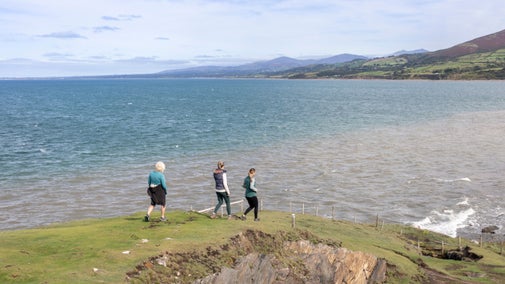Struddicks circular walk
Cornwall
This short but fairly demanding trail takes you through unkempt wilderness and along rugged Cornish coastline alive with wildlife. The circular route starts by following part of the South West Coast Path, exploring woodland and open scrub, before climbing high above the cliffs. Here you can admire sweeping views of the surrounding coastal landscape. It then descends along narrow country tracks through farmland and back down to Seaton beach.
Near to
LansallosStart point
Seaton Bridge long stay car park, Bridge Road, Cornwall, PL11 3JF. Grid ref: SX302545Trail information
Cliffs and roads
This route passes cliff edges and unstable cliffs, and also follows country roads with no pavement. So please be careful and keep children supervised.
More near here
Whitsand Bay circular walk
Explore the coastline around Whitsand Bay on this circular walk between Tregantle Fort and Crafthole, full of wildlife, military history and smuggling stories.

Hendersick and Talland Bay Loop
This circular walking trail takes you along the South West Coast Path, with views over Looe Island and the South East Cornwall coast.

Lansallos coastal and woodland walk
Discover this trail with a stretch of coastline that offers secluded coves and beaches in Lansallos, Cornwall.

Polruan to Polperro rollercoaster walk
A strenuous walk high above turquoise seas and white sandy beaches, and through prime fishing and smuggling territory.

Get in touch
Our partners

We’ve partnered with Cotswold Outdoor to help everyone make the most of their time outdoors in the places we care for.
You might also be interested in
Walking
Explore some of the finest landscapes in our care on coastal paths, accessible trails, woodland walks and everything in between. Find the best places to walk near you.

Walking in Cornwall
From strolls that reward you with stunning views of the South West coast to gentle inland meanders, these are some of the best walks in Cornwall.

Cotswold Outdoor: our exclusive walking partner
Learn about the National Trust’s ongoing partnership with Cotswold Outdoor. Find out how they help us care for precious places and the exclusive discount available for National Trust supporters.

Staying safe at National Trust places
The special places in National Trust care sometimes come with a few risks for visitors, be it coastline or countryside. Find out how to keep safe throughout your visits.

Follow the Countryside Code
Help to look after National Trust places by observing a few simple guidelines during your visit and following the Countryside Code.

Exploring the area around Lansallos
Discover the places to visit in and around this Cornish village, including sandy coves, ancient churches, old water mills and landmarks from its smuggling heyday.

Outdoor activities at Lansallos
Whether you’re spending the day at Lansallos or sticking around for the week, there are plenty of ways to fill your time along this dramatic stretch of Cornish coast.

Top coastal walks
Explore some of the UK's most famous natural landmarks on a coastal walk. With a variety of walking trails offering clifftop views, golden sands and local wildlife, there's a walk for everyone.



